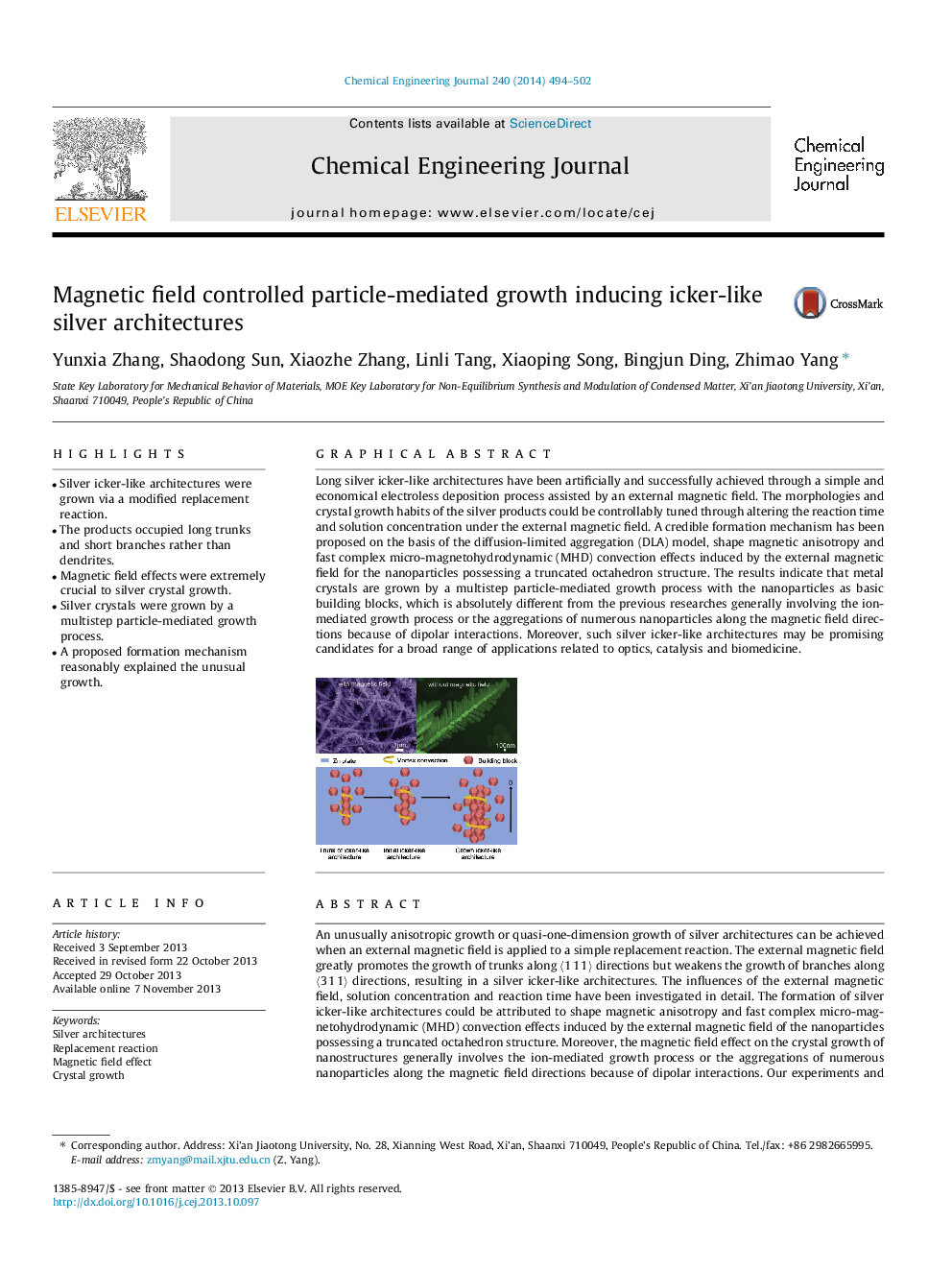| Article ID | Journal | Published Year | Pages | File Type |
|---|---|---|---|---|
| 147734 | Chemical Engineering Journal | 2014 | 9 Pages |
•Silver icker-like architectures were grown via a modified replacement reaction.•The products occupied long trunks and short branches rather than dendrites.•Magnetic field effects were extremely crucial to silver crystal growth.•Silver crystals were grown by a multistep particle-mediated growth process.•A proposed formation mechanism reasonably explained the unusual growth.
An unusually anisotropic growth or quasi-one-dimension growth of silver architectures can be achieved when an external magnetic field is applied to a simple replacement reaction. The external magnetic field greatly promotes the growth of trunks along 〈1 1 1〉 directions but weakens the growth of branches along 〈3 1 1〉 directions, resulting in a silver icker-like architectures. The influences of the external magnetic field, solution concentration and reaction time have been investigated in detail. The formation of silver icker-like architectures could be attributed to shape magnetic anisotropy and fast complex micro-magnetohydrodynamic (MHD) convection effects induced by the external magnetic field of the nanoparticles possessing a truncated octahedron structure. Moreover, the magnetic field effect on the crystal growth of nanostructures generally involves the ion-mediated growth process or the aggregations of numerous nanoparticles along the magnetic field directions because of dipolar interactions. Our experiments and discussions, however, indicate that metal crystals are grown through a multistep particle-mediated growth process with the nanoparticles as basic building blocks.
Graphical abstractLong silver icker-like architectures have been artificially and successfully achieved through a simple and economical electroless deposition process assisted by an external magnetic field. The morphologies and crystal growth habits of the silver products could be controllably tuned through altering the reaction time and solution concentration under the external magnetic field. A credible formation mechanism has been proposed on the basis of the diffusion-limited aggregation (DLA) model, shape magnetic anisotropy and fast complex micro-magnetohydrodynamic (MHD) convection effects induced by the external magnetic field for the nanoparticles possessing a truncated octahedron structure. The results indicate that metal crystals are grown by a multistep particle-mediated growth process with the nanoparticles as basic building blocks, which is absolutely different from the previous researches generally involving the ion-mediated growth process or the aggregations of numerous nanoparticles along the magnetic field directions because of dipolar interactions. Moreover, such silver icker-like architectures may be promising candidates for a broad range of applications related to optics, catalysis and biomedicine.Figure optionsDownload full-size imageDownload as PowerPoint slide
